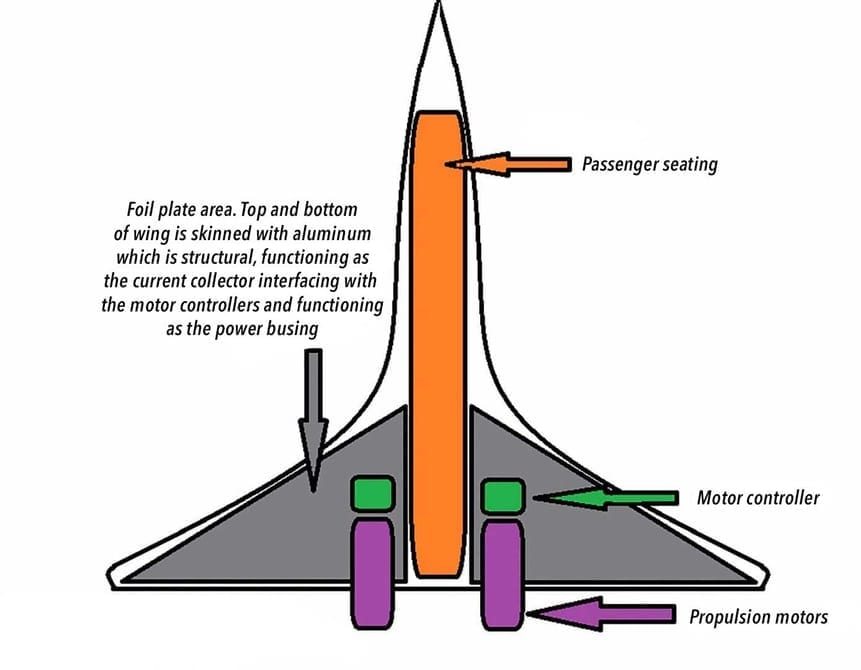
A new technology developed by Penn State researchers, called Cold Sintering Process (CSP), has opened a window on the ability to combine incompatible materials, such as ceramics and plastics, into new, useful compound materials, and to lower the energy cost of many types of manufacturing.
Ceramics is the oldest known man-made material, dating back tens of thousands of years. Throughout that time most all ceramics have been made by heating them to high temperatures, either by firing in kilns or sintering ceramic powders in furnaces, both of which require large amounts of energy.
“In this day and age, when we have to be incredibly conscious of the CO2 budget, the energy budget, rethinking many of our manufacturing processes, including ceramics, becomes absolutely vital,” said Clive Randall, professor of materials science and engineering at Penn State who developed the process with his team. “Not only is it a low temperature process (room temperature up to 200 degrees Celsius), but we are also densifying some materials to over 95 percent of their theoretical density in 15 minutes. We can now make a ceramic faster than you can bake a pizza, and at lower temperatures.”
In a recent article in the journal Advanced Functional Materials, Randall and his coauthors describe the co-sintering of ceramic and thermoplastic polymer composites using CSP. Three types of polymer were selected to complement the properties of three types of ceramics, a microwave dielectric, an electrolyte and a semiconductor, in order to highlight the diversity of applicable materials. These composite materials demonstrate new possibilities for dielectric property design, and both ionic and electronic electrical conductivity design. These composites can be sintered to high density at 120 degrees C in a time frame of 15 to 60 minutes.
Just add water
According to the researchers, the process involves wetting ceramic powder with a few drops of water or acid solution. The solid surfaces of the particles decompose and partially dissolve in the water to produce a liquid phase at particle-particle interfaces. Adding temperature and pressure causes the water to flow and the solid particles to rearrange in an initial densification process. Then in a second process, clusters of atoms or ions move away from where the particles are in contact, which aids diffusion, which then minimizes surface free energy, allowing the particles to pack tightly together. The key is knowing the exact combination of moisture, pressure, heat and time required to capture the reaction rates so the material fully crystallizes and gets to very high density.
“I see cold sintering process as a continuum of different challenges,” Randall said. “In some systems, it’s so easy you don’t need pressure. In others you do. In some you need to use nanoparticles. In others, you can get away with a mixture of nanoparticles and larger particles. It really all depends on the systems and chemistries you are talking about.”
The Penn State team has begun building a library of the precise techniques required to use CSP on various materials systems, with 50 processes verified to-date. These include ceramic-ceramic composites, ceramic-nanoparticle composites, ceramic-metals, as well as the ceramic-polymers discussed in this paper.
Other areas that are now open to exploration by CSP include architectural materials, such as ceramic bricks, thermal insulation, biomedical implants and many types of electronic components.
“My hope is that a lot of the manufacturing processes that already exist will be able to use this process, and we can learn from polymer manufacturing practices,” Randall concluded.
Learn more: LOWERING THE HEAT MAKES NEW MATERIALS POSSIBLE WHILE SAVING ENERGY
The Latest on: Cold Sintering Process
[google_news title=”” keyword=”Cold Sintering Process” num_posts=”10″ blurb_length=”0″ show_thumb=”left”]
via Google News
The Latest on: Cold Sintering Process
- Rice University Students Develop Affordable Metal 3D Printer Prototype Using Cold-Spray Technologyon April 25, 2024 at 9:47 am
Students at Rice University have developed an incredibly inexpensive metal 3D printer prototype. Researchers at Virginia Tech have taken on a big challenge: making wind turbines sustainable.
- 14 Foods That Are Better When You Start With A Cold Skilleton April 22, 2024 at 6:25 am
When you think of a skillet, you tend to imagine food dropped into a piping-hot one. That's not always the best idea, though, as these foods demonstrate.
- What Is Carbon? Life's Most Crucial Element, Explainedon April 22, 2024 at 4:00 am
Carbon is found in cellulose and lignin, the structural polymers of plants, as well as the DNA they use to live, grow and reproduce. Carbon is also found in the functional proteins that let this ...
- Left your phone in the cold? Here's how to fix iton April 5, 2024 at 5:00 pm
During this warming process, do not charge your cold phone. Just let it warm up on its own with no charging cable attached. Condensation is another thing you should consider. This is especially ...
- laser sinteringon April 24, 2023 at 5:01 pm
At the level pursued by many Hackaday readers, the advent of affordable 3D printing has revolutionised prototyping, as long as the resolution of a desktop printer is adequate and the part can be ...
- Applicability of the CSP to carbon capture and storage (IMAGE)on September 20, 2022 at 8:26 pm
The CSP emulates the sedimentary rock formation process in the Earth’s crust and facilitates the solidification of basic magnesium carbonate and hydroxide powders. It may be used as a method to ...
- Ceramic 2D Hybrid (IMAGE)on June 6, 2022 at 8:04 pm
The schematic illustration showing the co-sintering of ceramics and 2D materials using cold sintering processing, and TEM image and energy dispersive spectroscopy (EDS) map of cold sintered 99ZnO ...
- Hot & Cold Isostatic Pressingon March 8, 2022 at 9:30 am
This research CIP is used to shape form powders into a green body, prior to sintering. This model allows the pressing of various shapes, including discs, bars, and tubes, and is therefore a ...
- 3D Printing Damascus-like Steelon July 1, 2020 at 5:07 pm
The team found that by varying the exact settings of the laser sintering process on a layer-by-layer basis, they could create different microstructures throughout a single part. This allows the ...
via Bing News









